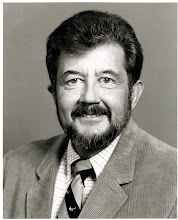The Sun rotates on its axis in an anticlockwise direction. The Earth also rotates on its axis in an anticlockwise direction. And the Earth revolves around the Sun in an anticlockwise direction. All the other major planets, and most of the minor planets (asteroids) also orbit the Sun in an anticlockwise direction. (A few comets orbit in the opposite, or clockwise, direction).
Most of the planets rotate about their own axes in a counterclockwise direction. This is called prograde rotation. Venus and Neptune are exceptions. Venus has a very slow clockwise rotation (termed retrograde), and Uranus, although it rotates every 15.5 hours, has its equator inclined at almost a right angle to its orbital plane. It is thus difficult to know whether to describe the rotation of Uranus as prograde with an equatorial inclination of 98o or retrograde with an inclination of 82o.
But why is nearly everything moving counter-clockwise (prograde rotation)? My guess is that the short answer is the condensates (Sun and planets) from the huge cloud that formed the solar system will gain their rotation from the main body formed from the cloud (i.e. the Sun that has nearly 100% of the mass of the Solar System, 99.8 or 99.9%). So if the sun rotates counterclockwise, the planets probably will also. For a more detailed answer, see the Physics Stack Exchange.**
But why do Galaxies spin?
Why do galaxies form at all? If the matter were distributed completely uniformly, there would be nothing to pick one spot over another for the galaxy to start clumping. Each bit of matter would have a uniform surrounding and not be pulled any direction. However, there's some randomness (apparently ultimately from quantum mechanics) giving some lumpiness to get the process started.
The same random lumpiness means that as a galaxy starts to form there will be random lumps of stuff outside the part forming the galaxy. So different parts of the galaxy will be pulled different directions by gravity from the neighbors. Unless there's a special accident, the torques won't perfectly balance and the galaxy will pick up some "spin"- angular momentum. (Emphasis added) A quick web search suggests that the details of the process are still being worked out:
* http://www.spaceacademy.net.au/library/notes/anticlok.htm
https://www.google.com/search?q=why+does+the+Earth+rotate+counterclockwise&rlz=1C1PRFC_enUS655US656&oq=why+does+the+Earth+rotate+counterclockwise&aqs=chrome..69i57j0l3.12360j1j9&sourceid=chrome&ie=UTF-8
** https://physics.stackexchange.com/questions/72656/why-does-the-moon-or-the-earth-revolve-anti-clockwise

No comments:
Post a Comment